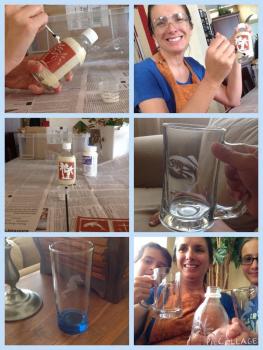
Chemical Glass Etching - Chemical or Physical Change?

- School:
- Palmetto Ridge High
- Subject:
- Science
- Teacher:
- Allison Chapman
- Students Impacted:
- 750
- Grade:
- 9-12
- Date:
- August 31, 2016
Investor
Thank you to the following investor for funding this grant.
License For Learning Plate Fund - $200.00
Original Grant Overview
Goal
Students will learn the difference between chemical and physical changes while studying chemical reactions and creating a memento to take home.
What will be done with my students
Students will watch a short video on the use of sand blasting to etch glass and then compare it to chemical glass etching.
They will then make or choose a stencil and an item to chemically etch (small glass or mirror).
Students will adhere the stencil on the glass surface they wish to etch and apply masking tape all around the stencil to protect the glass.
While wearing gloves and goggles, the students will carefully apply the etching compound and leave it on the surface for 1-2 minutes.
Finally the students will completely rinse the etching compound off their item and wash it and their hands.
Benefits to my students
Students will witness first hand the difference between physically and chemically etching glass. They will also have a piece of art to take home and be able to discuss the chemical process used to etch the design in the glass.
Budget Narrative
We have some of the materials to perform this lab experiment but need more etching compound ($70) and could use more reusable/custom stencils and equipment ($95). Students would be asked to bring in a small glass bottle to etch or we could provide something for them from Goodwill or The Dollar Store. Glass items there can be marked as low as fifty cents a piece when on sale ($100).
Items
| # | Item | Cost |
|---|---|---|
| 1 | Glasses/Mirrors | $143.00 |
| 2 | Etching Compound | $50.00 |
| 3 | Reusable Stencils ($7 each) | $7.00 |
| 4 | Exacto Knife to cut custom stencil designs | $0.00 |
| 5 | Masking Tape | $0.00 |
| Total: | $200.00 |



Share
Please share this page to help in fulfilling this grant.
Email to a Friend